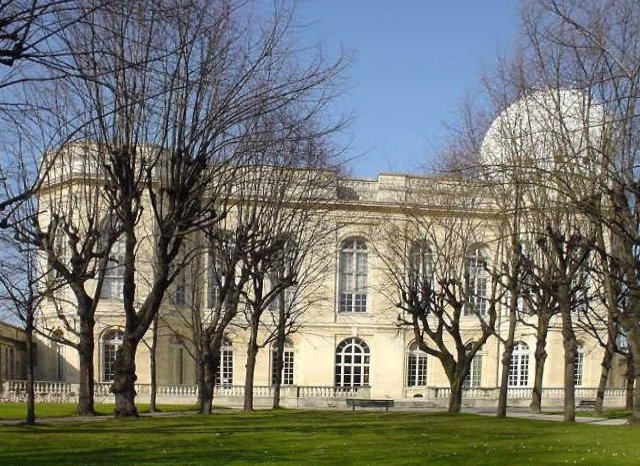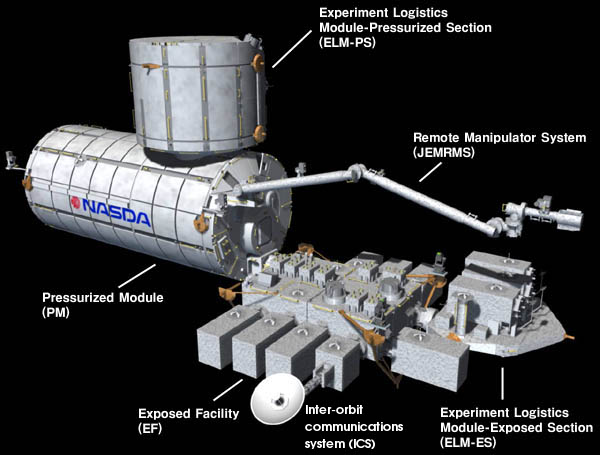|
MicrOmega-IR
MicrOmega-IR is an infrared hyperspectral microscope that is part of the science payload on board the European ''Rosalind Franklin'' rover, tasked to search for biosignatures on Mars. The rover is planned to land on Mars in the mid- or late 2020s. MicrOmega-IR will analyse ''in situ'' the powder material derived from crushed samples collected by the rover's core drill. Development The ''MicrOmega'' mnemonic is derived from its French name ''Micro observatoire pour la mineralogie, l'eau, les glaces et l'activité''; IR stands for infrared. It was developed by France's ''Institut d'Astrophysique Spatiale'' at the CNRS. France has also flown MicrOmega on other missions such as the 2011 Fobos-Grunt and the ''Hayabusa2'' MASCOT mobile lander currently exploring asteroid Ryugu. France is also developing a variant called MacrOmega Near-IR Spectrometer for the Martian Moons Exploration (MMX) lander, a Japanese sample-return mission to Mars' moon Phobos. The Principal Investigato ... [...More Info...] [...Related Items...] OR: [Wikipedia] [Google] [Baidu] |
Rosalind Franklin (rover)
''Rosalind Franklin'', previously known as the ExoMars rover, is a planned robotic Mars rover, part of the international ExoMars programme led by the European Space Agency and the Russian Roscosmos State Corporation. The mission was scheduled to launch in July 2020, but was postponed to 2022. The 2022 Russian invasion of Ukraine has caused an indefinite delay of the programme, as the member states of the ESA voted to suspend the joint mission with Russia; in July 2022, ESA terminated its cooperation on the project with Russia. As of May 2022, the launch of the rover is not expected to occur before 2028 due to the need for a new non-Russian landing platform. The original plan called for a Russian launch vehicle, an ESA carrier model, and a Russian lander named '' Kazachok'', that would deploy the rover to Mars' surface. Once it had safely landed, the solar powered rover would begin a seven-month (218-sol) mission to search for the existence of past life on Mars. The Trace Ga ... [...More Info...] [...Related Items...] OR: [Wikipedia] [Google] [Baidu] |
European Space Agency
, owners = , headquarters = Paris, Île-de-France, France , coordinates = , spaceport = Guiana Space Centre , seal = File:ESA emblem seal.png , seal_size = 130px , image = Views in the Main Control Room (12052189474).jpg , size = , caption = , acronym = , established = , employees = 2,200 , administrator = Director General Josef Aschbacher , budget = €7.2 billion (2022) , language = English and French (working languages) , website = , logo = European Space Agency logo.svg , logo_caption = Logo , image_caption = European Space Operations Centre (ESOC) Main Control Room The European Space Agency (ESA; french: Agence spatiale européenne , it, Agenzia Spaziale Europea, es, Agencia Espacial Europea ASE; german: Europäische Weltraumorganisation) is an intergovernmental organisation of 22 member states dedicated to the exploration of space. Established in 1975 and headquartered ... [...More Info...] [...Related Items...] OR: [Wikipedia] [Google] [Baidu] |
162173 Ryugu
162173 Ryugu, provisional designation , is a near-Earth object and a potentially hazardous asteroid of the Apollo group. It measures approximately in diameter and is a dark object of the rare spectral type Cb, with qualities of both a C-type asteroid and a B-type asteroid. In June 2018, the Japanese spacecraft '' Hayabusa2'' arrived at the asteroid. After making measurements and taking samples, ''Hayabusa2'' left Ryugu for Earth in November 2019/ and returned the sample capsule to Earth on 5 December 2020. History Discovery and name Ryugu was discovered on 10 May 1999 by astronomers with the Lincoln Near-Earth Asteroid Research at the Lincoln Lab's ETS near Socorro, New Mexico, in the United States. It was given the provisional designation . The asteroid was officially named "Ryugu" by the Minor Planet Center on 28 September 2015 (). The name refers to Ryūgū-jō (Dragon Palace), a magical underwater palace in a Japanese folktale. In the story, the fisherman Urashi ... [...More Info...] [...Related Items...] OR: [Wikipedia] [Google] [Baidu] |
Mars Organic Molecule Analyzer
The Mars Organic Molecule Analyser (MOMA) is a mass spectrometer-based instrument on board the ''Rosalind Franklin'' rover to be launched in 2028 to Mars on an astrobiology mission. [...More Info...] [...Related Items...] OR: [Wikipedia] [Google] [Baidu] |
Field Of View
The field of view (FoV) is the extent of the observable world that is seen at any given moment. In the case of optical instruments or sensors it is a solid angle through which a detector is sensitive to electromagnetic radiation. Humans and animals In the context of human and primate vision, the term "field of view" is typically only used in the sense of a restriction to what is visible by external apparatus, like when wearing spectacles or virtual reality goggles. Note that eye movements are allowed in the definition but do not change the field of view when understood this way. If the analogy of the eye's retina working as a sensor is drawn upon, the corresponding concept in human (and much of animal vision) is the visual field. It is defined as "the number of degrees of visual angle during stable fixation of the eyes".Strasburger, Hans; Pöppel, Ernst (2002). Visual Field. In G. Adelman & B.H. Smith (Eds): ''Encyclopedia of Neuroscience''; 3rd edition, on CD-ROM. El ... [...More Info...] [...Related Items...] OR: [Wikipedia] [Google] [Baidu] |
Russian Space Research Institute
The Russian Space Research Institute (russian: Институт космических исследований Российской академии наук, Space Research Institute of the Russian Academy of Sciences, SRI RAS, Russian abbreviation: ИКИ РАН, IKI RAN) is the leading organization of the Russian Academy of Sciences on space exploration to benefit fundamental science. It was formerly known as the Space Research Institute of the USSR Academy of Sciences ( Russian abbr.: ИКИ АН СССР, IKI AN SSSR). It is usually known by the shorter name Space Research Institute and especially by the initialism IKI. The institute is located in Moscow with a staff of 289 scientists. It conducts scientific research in the fields of astrophysics, planetary science, solar physics, Sun-Earth relations, cosmic plasma, and geophysics. IKI also develops and tests space technologies in collaboration with the Russian Academy of Sciences and the Federal Space Agency. History ... [...More Info...] [...Related Items...] OR: [Wikipedia] [Google] [Baidu] |
University Of Bern
The University of Bern (german: Universität Bern, french: Université de Berne, la, Universitas Bernensis) is a university in the Swiss capital of Bern and was founded in 1834. It is regulated and financed by the Canton of Bern. It is a comprehensive university offering a broad choice of courses and programs in eight faculties and some 150 institutes. With around 18,576 students, the University of Bern is the third largest university in Switzerland. Organization The University of Bern operates at three levels: university, faculties and institutes. Other organizational units include interfaculty and general university units. The university's highest governing body is the Senate, which is responsible for issuing statutes, rules and regulations. Directly answerable to the Senate is the University Board of Directors, the governing body for university management and coordination. The board comprises the rector, the vice-rectors and the administrative director. The structures and ... [...More Info...] [...Related Items...] OR: [Wikipedia] [Google] [Baidu] |
Paris Observatory
The Paris Observatory (french: Observatoire de Paris ), a research institution of the Paris Sciences et Lettres University, is the foremost astronomical observatory of France, and one of the largest astronomical centers in the world. Its historic building is on the Left Bank of the Seine in central Paris, but most of the staff work on a satellite campus in Meudon, a suburb southwest of Paris. The Paris Observatory was founded in 1667. Construction was completed by the early 1670s and coincided with a major push for increased science, and the founding of the Royal Academy of Sciences. King Louis XIV's minister of finance organized a "scientific powerhouse" to increase understanding of astronomy, maritime navigation, and science in general. Through the centuries the Paris Observatory has continued in support of astronomical activities, and in the 21st century connects multiple sites and organizations, supporting astronomy and science, past and present. Constitution Adminis ... [...More Info...] [...Related Items...] OR: [Wikipedia] [Google] [Baidu] |
Principal Investigator
In many countries, the term principal investigator (PI) refers to the holder of an independent grant and the lead researcher for the grant project, usually in the sciences, such as a laboratory study or a clinical trial. The phrase is also often used as a synonym for "head of the laboratory" or "research group leader". While the expression is common in the sciences, it is used widely for the person or persons who make final decisions and supervise funding and expenditures on a given research project. A co-investigator (Co-I) assists the principal investigator in the management and leadership of the research project. There may be a number of co-investigators supporting a PI. Federal funding In the context of United States federal funding from agencies such as the National Institutes of Health (NIH) or the National Science Foundation (NSF), the PI is the person who takes direct responsibility for completion of a funded project, directing the research and reporting directly to the f ... [...More Info...] [...Related Items...] OR: [Wikipedia] [Google] [Baidu] |
JAXA
The is the Japanese national air and space agency. Through the merger of three previously independent organizations, JAXA was formed on 1 October 2003. JAXA is responsible for research, technology development and launch of satellites into orbit, and is involved in many more advanced missions such as asteroid exploration and possible human exploration of the Moon. Its motto is ''One JAXA'' and its corporate slogan is ''Explore to Realize'' (formerly ''Reaching for the skies, exploring space''). History On 1 October 2003, three organizations were merged to form the new JAXA: Japan's Institute of Space and Astronautical Science (ISAS), the National Aerospace Laboratory of Japan (NAL), and National Space Development Agency of Japan (NASDA). JAXA was formed as an Independent Administrative Institution administered by the Ministry of Education, Culture, Sports, Science and Technology (MEXT) and the Ministry of Internal Affairs and Communications (MIC). Before the merger ... [...More Info...] [...Related Items...] OR: [Wikipedia] [Google] [Baidu] |






